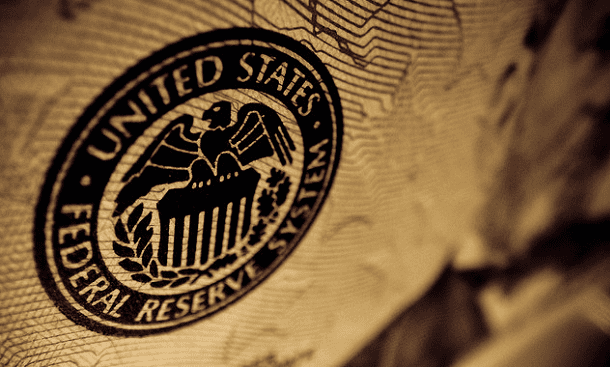Analysts are still scratching their heads regarding the Fed’s decision last week to inject roughly $60 billion per month into the U.S. economy. The central bank announced that it would be buying back Treasury bills, perhaps until Q2 of 2020, in hopes of preventing turmoil in repo money markets. The confusing part was when Jerome Powell stressed that he did not want the press to refer to this program as another round of Quantitative Easing, but if it walks and talks “like a duck”, then… In any event, cryptos benefited.
Yes, cryptocurrencies reacted to the news in the fashion expected. When fiat currencies are debased by central banking maneuverings, Bitcoin and many of its altcoin brethren will naturally appreciate, as will Gold and other precious metals. At the end of the day, Bitcoin does respond like a commodity, whose price is denominated in U.S. Dollars. As we reported last week:
BTC had rallied over 5% during the day, due to the Fed’s announced policy of expanding its balance sheet.
Coincidentally, the SEC also rejected another BTC ETF proposal, but that action barely moved the Bitcoin “needle”.
Bitcoin has since given up those temporary gains and is back languishing around $8,000, threatening to go lower, but what is the Fed doing? Daniel Lacalle, an author and Fed observer, explained to Bitcoin.com how destructive recent spikes in the repo market might be:
What the repo market crisis shows us is that liquidity is substantially lower than what the Federal Reserve believes, that fear of contagion and rising risk are evident in the weakest link of the financial repression machine (the overnight market) and, more importantly, that liquidity providers probably have significantly more leverage than many expected.
Are we on the cusp of a financial crisis, similar to the tipping point a decade ago? Lacalle believes the market is beginning to doubt if the central bank planners can really save this economy from its current trend toward recession. She foresees a domino effect of adding excess liquidity:
The collateral damage of excess liquidity includes the destruction of the credit transmission mechanism, disguising the real assessment of risk and, more importantly, leads to a synchronized excess in debt that will not be solved by lower rates and more liquidity injections.
Economists, however, are confused by Powell’s entreaty to not label these new actions as “QE”. Reducing interest rates did not provide a boost to a lagging economy, and clearly the next step of increasing liquidity by buying roughly $60 billion of Treasuries a month meets the definition of a quantitative easing strategy.
Observers have noted that the Fed does not want to raise alarm that it might be pursuing similar monetary policies as it did during the last financial crisis. Laura Rosner, a co-founder of Macropolicy Perspectives, told reporters that the Fed “wants to keep QE as something special. I don’t think they want to send a signal that things are bad”.
Whatever the case may be, cryptos benefited just as expected, if only temporarily.
